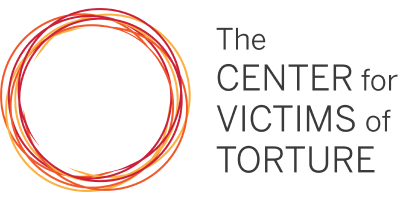CVT was founded in 1985 as a nongovernmental organization after the governor of Minnesota, Rudy Perpich, assembled a committee to recommend initiatives that would make a difference for human rights. The committee proposed creation of the United States’ first center for rehabilitative care for survivors of torture. The Center for Victims of Torture opened in St. Paul, with one counselor. Over the years, we grew geographically and programmatically, today offering culturally-competent and interdisciplinary care to survivors, along with initiatives to end torture, enhance the skills and resilience of human rights defenders and organizations, and to facilitate justice for survivors.
Great progress has been made in that time. Since CVT began our work, the United States ratified the Convention against Torture, passed the Torture Victims Relief Act, and filed a presidential executive order banning torture. In addition, tens of thousands of survivors found care and began rebuilding their lives after torture.
Check out highlights from our history.
Douglas A. Johnson is hired as executive director.
CVT opens a policy office in Washington, D.C.
The first Torture Victims Relief Act is introduced. The U.S. ratifies the Convention against Torture.
New Tactics in Human Rights project launches, building strategies & tactics for activists.
CVT open a center in Guinea (past project), & launches the National Capacity-Building Project to support U.S. torture treatment centers.
CVT capacity-building work goes international with Partnerships in Trauma Healing.
CVT opens a center in Sierra Leone (past project).
CVT opens a center in Liberia(past project).
CVT opens a center in Amman, Jordan.
President Obama signs Executive Order banning torture, as a result of CVT-led Campaign to Ban Torture.
CVT opens a center in Gulu, Uganda.
CVT opens a center in Dadaab, Kenya (past project).
CVT’s New Tactics program opens a MENA-region office in Amman, Jordan.
Curt Goering is hired as executive director of CVT.
CVT opens the Healing Hearts project in St. Paul, and offices in Nairobi, Kenya, and Tigray Ethiopia.
CVT opens a center in Atlanta, Georgia.
CVT opens a center in St. Cloud, Minnesota.
Dr. Simon Adams is hired as president and CEO.
CVT open Proyecto Mariposa in Tucson, Arizona.
CVT launches the Healing, Incarceration and Policing project (past project).
CVT commemorates 20th anniversary of the opening of Guantánamo detention facility.
CVT’s team in Tigray, Ethiopia expands care to internally displaced people.
CVT opens a new center in Dabat, Ethiopia.
CVT conducts rapid response to 222 Nicaraguan political prisoners released to the U.S.
CVT joins partners in pursuing a Torture-Free Trade Treaty at the UN.
CVT launches CVT United Soccer Club in Minnesota.
CVT opens Arman and Raahat projects to serve Afghan refugees in Georgia and Minnesota.
CVT begins a randomized control trial on impacts of trauma-informed massage therapy.
CVT opens the first Asylum Medicine Clinic in Minnesota.
The Trump administration cuts foreign aid funding, forcing CVT to close 75% of its overseas work.
CVT joins a lawsuit against the U.S. government, challenging the halt to foreign aid funding.
CVT announces new programming in Syria, working with partners to support survivors now rebuilding their country.
CVT opens a smaller, new project for clients in Tigray, Ethiopia, with funding from ECHO.
